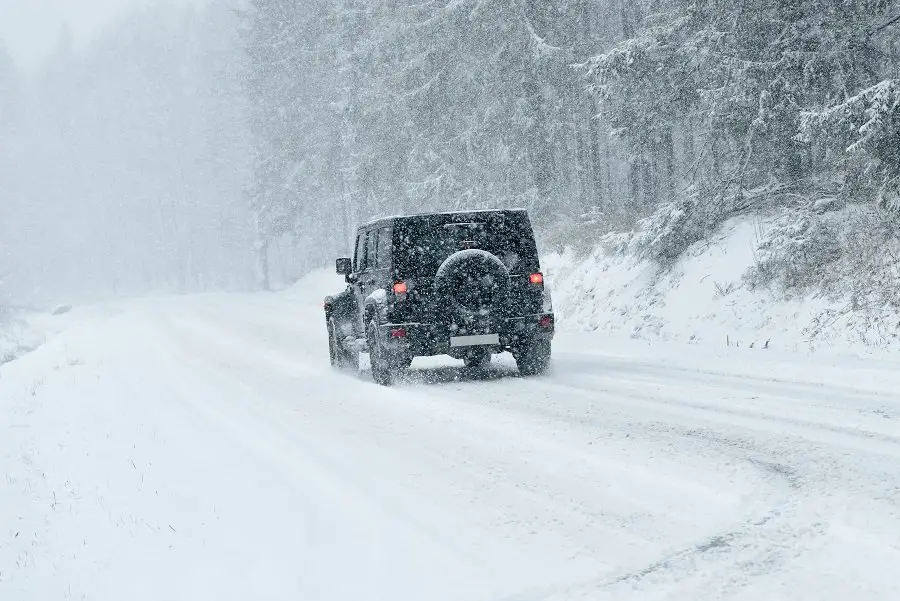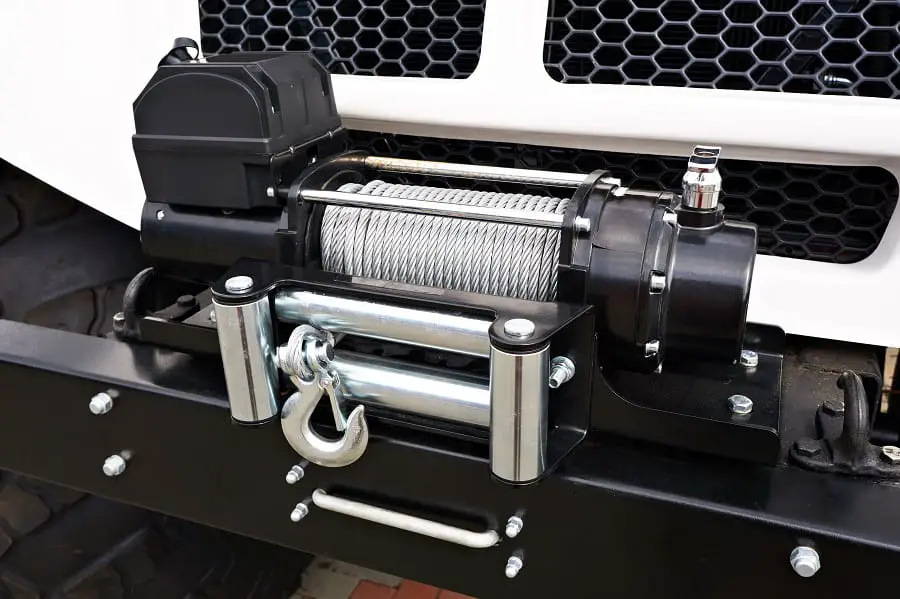
A 4×4 was designed for life off-road. They are capable vehicles that are able to navigate difficult terrain with ease. Even so, many 4×4’s spend their lives cruising around town centers and buzzing along highways.
If you have access to an all-terrain vehicle then you might consider taking it off-road. Exploring off the beaten track is an enjoyable way to get back to nature. It’s not something you should do unprepared though. This guide will look at what you need to know before offroading.
Off-Roading 101: Practice on an Off-Road Course
If you have never driven off-road before then you will need to learn. It’s nothing like driving on the road, you have to make all sorts of different decisions. An off-road course is a great place to learn. There are also some courses which have experts who will help you to learn how to find the best route around the course.
With a few practice sessions, you are prepared for anything a real-life offroading trail has to throw at you. It’s all experience though, you will never stop learning how to drive off-road. You will learn new driving techniques to make driving on difficult terrain much easier.
Finding an Off-Road Course
There are off-road courses all over the country. So you shouldn’t have a problem finding out. Ideally, you will want to look for one that allows you to drive your own car around the course. This will give you chance to get to know it better. Try searching online to find off-roading trial courses around your area.
We have written extensively about off-roading in each state. Check the list at the bottom of this post.
Off-Roading 101: Get to Know your Vehicle
Not all off-road vehicles are created equal, different off-road vehicles are capable of different things. You will need to familiarize yourself with the capabilities of your very own 4×4 vehicle. The easiest way to do this is to drive it around an off-road course yourself.
Also, take a look at the features fitted to your car. Check the specifications regarding its wading depth, and the maximum angle it can handle. Make sure you have the right tires fitted for the weather conditions, season, and type of terrain you are driving over.
There are of course plenty of upgrades you can make to your vehicle if you want to make it more capable. Upgrading the shock absorbers, fitting under bodyguarding, or replacing the bumpers and snorkels are all ways to push your car a bit further. Research the different offroad accessories before choosing what to equip your car with.
Off-Roading 101: Learn the Terms
There are a few special terms that you will need to learn about in order to drive off-road. By understanding these terms you will know how to best get out of difficult situations.
Locking Differential
A car will normally provide a different amount of power to each wheel. This can cause problems when driving off-road since the stuck wheel can dig in more making the problem worse. A locking differential is normally just a button you need to press. This will lock the differential so all the wheels turn at the same speed. This should help to pull the vehicle out of the soft ground.
Traction Control
All modern off-road vehicles will have traction control. This will normally be helpful when driving off-road, but there are times when you might need to turn it off. Read your vehicle’s manual to learn about how the traction control system works.

High and Low Ratio
An off-road 4×4 car will have two gearboxes. A High Ratio Box for everyday driving, and a low ratio box for when you need more torque. 4×4 high ratio allows you to drive at normal speeds ad is perfect for most parts of an off-road course and also driving on asphalt roads. The low ratio box is much slower but has more torque to get you out of tricky situations.
Off-Roading 101: Be Prepared
Before you go offroading be prepared. Make sure people know where you are going and when you should be expected back. Also make sure you have plenty of fuel to get there and back again, you really don’t want to run out of fuel in the middle of nowhere. Other things you will need include:
- Cellular Phone with charger
- Suitable Clothing – plus a spare change of clothes
- A Flashlight
- Spare Wheel and air compressor
- Jack
- Toolkit
- Winch
- Extra Fuel
- Fully Stocked First Aid Kit
- Shovel
Off-Roading 101: The Importance of a Good Winch
A winch might not be the first thing you consider buying to go off-roading, and while it’s not essential, it is a good idea to get a winch. A winch frees you from potentially expensive difficulties. Winches help you get out of precarious positions like getting stuck in a ditch.
It’s always better to spend a bit extra on a good winch, rather than saving money to buy a cheaper one. A good quality winch will be able to pull you out of the mud, a cheaper one might give up when you need it most.

Off-Roading 101: Taking Plenty of Fuel
As well as making sure you have plenty of fuel to get to and from the off-roading trail, you should consider taking some extra. A Jerry tank filled with some extra fuel would always be a good idea. This helps to prepare for the worst-case scenario. If you’re serious about off-roading then you should get multiple Jerry cans so you can prepare for any eventuality.
Off-Roading 101: First Aid Kits
You will never know exactly what you are up against while offroading. It is fairly safe, but you could easily slip and cut yourself or suffer many other accidents. A first aid kit is a must-have piece of equipment just in case. Your first aid kit should include:
- Bandages
- Band-aids
- Alcohol Wipes
- Tweezers
- Painkillers
- Scissors
Off-Roading 101: Spare Wheel and Air Pump
Punctures might not be that common when driving on the road, but when driving off-road they are much more likely. It is fairly easy to rip the sidewall of the tire and cause damage. A full-size spare wheel and jack are both essential to allow you to keep going. For smaller punctures, you might be able to get away with using an air compressor to pump the tire up.
Shovel
You might not think about taking a shovel when you first start off-roading, but it is an important piece of kit to carry with you. Should you get the car stuck then a shovel might be all you need to get it out. A shovel can be used to dig around wheels to free them.
Blocks of Wood
Another great way of adding traction to your car is to use blocks of wood under your tires. Blocks of wood are great when getting out of sandy or soft mud situations.
Off-Roading 101: Navigating Difficult Trails
Some trails are more difficult than others. You will need to be patient and work out the best way to navigate these difficult trails. Take your time and try to work out the best path for the vehicle. You want to do everything you can to prevent the vehicle from getting stuck.
Getting stuck in the mud is half the fun! Learning how to get yourself out of the mud. With some practice, you should get much more experience and find yourself getting stuck much less often.

Off-Roading 101: Walking the Route
If you are unsure about the route you should take then you can park up at the side of the trail and take a stroll. Walking the route underfoot will help you to appreciate the difficult areas that will need more attention. You will also spot other important features that might help you to easily navigate the course in your vehicle.
Checking the Depth of Water
If there is any water to drive through, then you will need to carefully plan your route. It can be deceptive with the depth of the water. Use a long stick or a pole to check the depth of water before driving through.
If you are considering driving through water regularly then you might want to invest in a snorkel. A snorkel attaches to your car and helps the engine breathe if it gets submerged.
It’s important to carefully check the depth of water. If you drive through too much water then it can cause your engine to cut out which could cause you to get stranded.
Off-Roading 101: Keeping Legal
Before you ever go anywhere off-roading you need to make sure you are keeping on the right side of the law. Check that you have the landowner’s permission and that you aren’t doing anything illegal. Also, think about nature, try not to make any unnecessary damage.
Offroad Safety is the Number One Priority
Offroading is a lot of fun, but you need to keep yourself safe and sound. Always make sure you have all the safety equipment you need, and never push yourself harder than you are comfortable with. You need to take good care of yourself while you are offroading. Ideally, go offroading in a group so you have other people to watch your back. Always make sure you are offroading safely.
Final Thoughts
It is so much fun to go offroading, that once you’ve had a taste you will fall in love with the experience. It’s such a thrill that you will want to do it time and time again whenever you have any free time.

